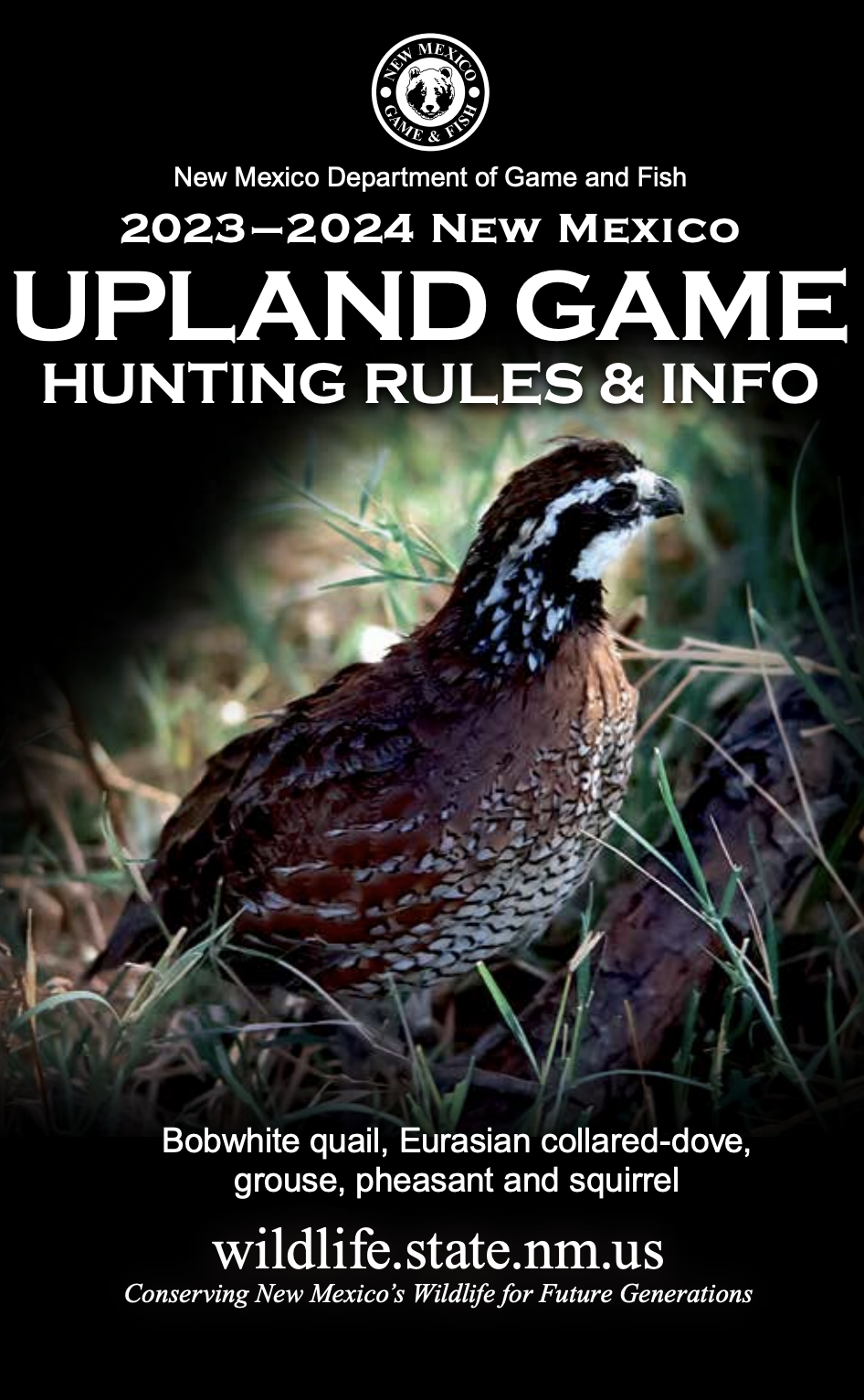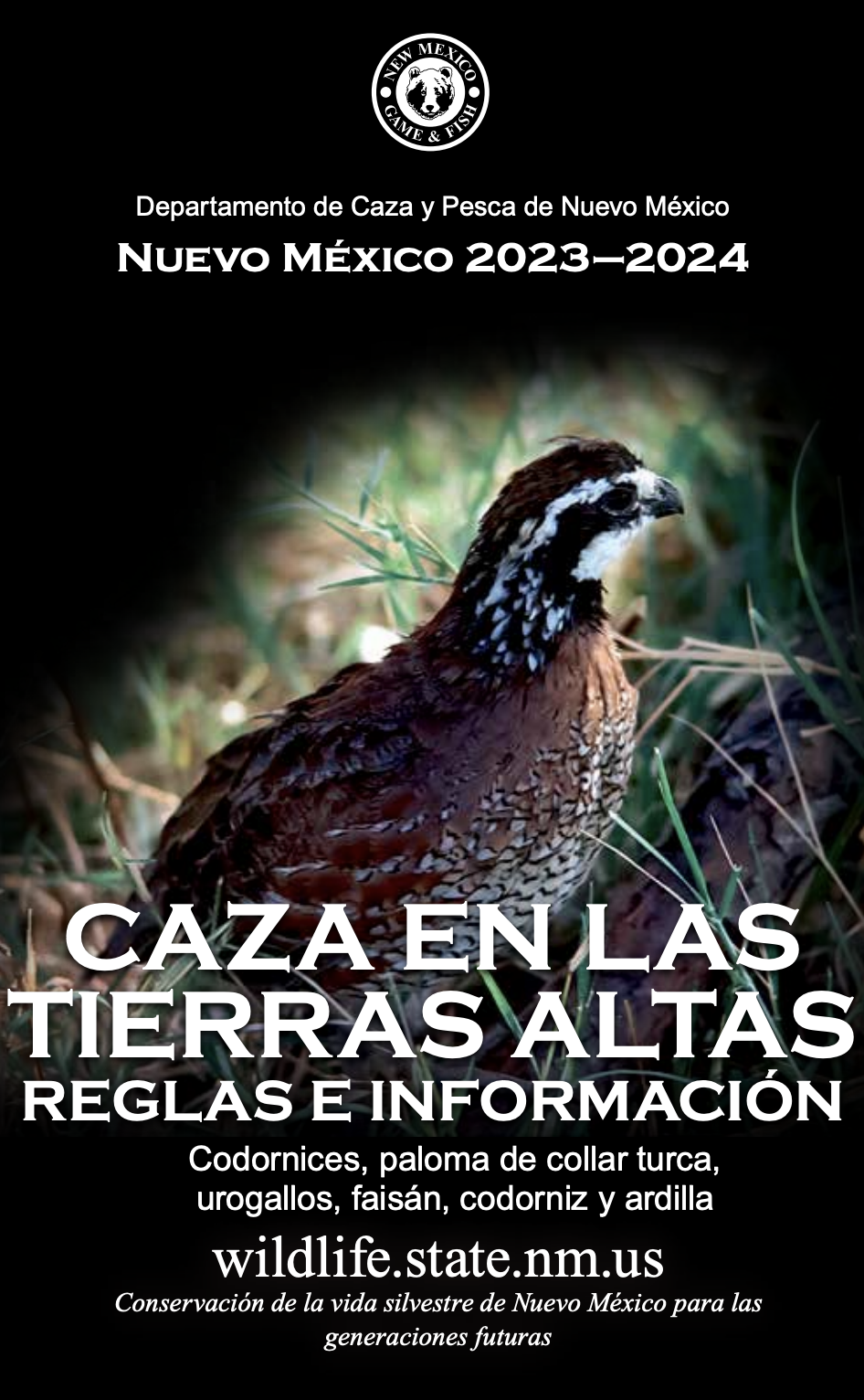Upland Game
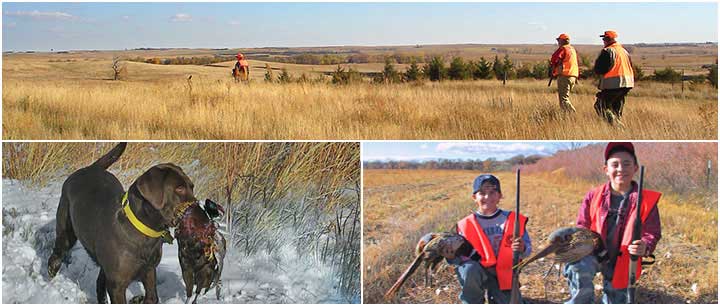
Resident upland game provide vast opportunities for both hunters and wildlife observers in New Mexico. Upland game are found in most habitats throughout the state, from mountains to desert. Our resident upland games species include: Quail, Dusky grouse, Pheasant, Eurasian collared-doves, and several Squirrel species. All distribution maps presented below are approximations based on habitat data, historic records, and reported observations.
A Game Hunting License is required to legally take upland game in the state.
PDF download:
 2023-2024 New Mexico Upland Game Rules and Info
2023-2024 New Mexico Upland Game Rules and Info
 2023-2024 Nuevo Mexico Caza en las Tierras Altas Reglas e Información
2023-2024 Nuevo Mexico Caza en las Tierras Altas Reglas e Información
 2020-2021 Resident Upland Game Harvest Results
2020-2021 Resident Upland Game Harvest Results
Migratory game birds are managed separately from resident upland game. Migratory birds are species that in the course of their annual migration traverse certain parts of the United States, Canada, Mexico, Russia, or Japan.
Click the headings below to learn more about Quail, Dusky grouse, Pheasant, Eurasian collared-doves, and Squirrel. For more hunting and license information, reference the New Mexico Hunting Rules & Info.
New Mexico is one of the few states that offer four different species of quail to hunters and birdwatchers. These quail include Scaled quail, Gambel’s quail, Northern bobwhite, and Montezuma quail. Quail are a relatively short-lived species relying on high productivity over a short period of time. Maximizing production is key to maintaining quail populations. Annual precipitation has a significant influence on quail abundance. Spring moisture is important for bobwhite, Gambel’s, and scaled quail, whereas summer rains are key to good Montezuma quail production.
Quail hunting southeast New Mexico from New Mexico Wildlife magazine (Fall / Winter 2016 – Vol 59 Num 3).
Scaled quail
Scaled quail are found in semi-arid rangelands with mixed scrub. This species is generally associated with open habitats and tend to avoid rugged slopes and dense stream courses. Common vegetation includes mesquite, pricklypear cactus, and scattered shrubs and grasses.
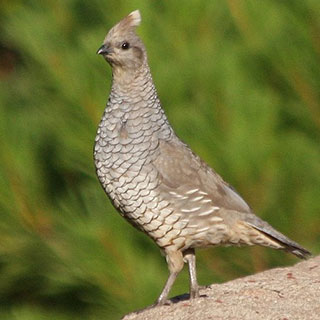
Scaled quail (Photo by J.N. Stuart)
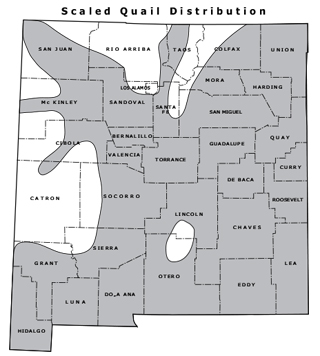
Gambel’s quail
Gambel’s quail are a warm-desert resident of brushy and thorny vegetation in desert mountain foothills, brushy drainages, as well as adjoining cultivated lands. Common vegetation includes mesquite, acacia, skunkbush, littleleaf sumac, and various cactus species.
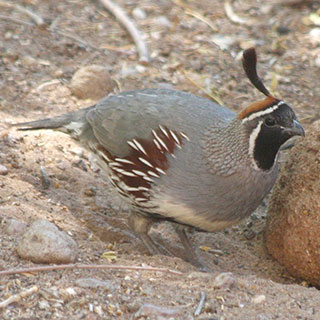
Gambel’s quail (Photo by J.N. Stuart)
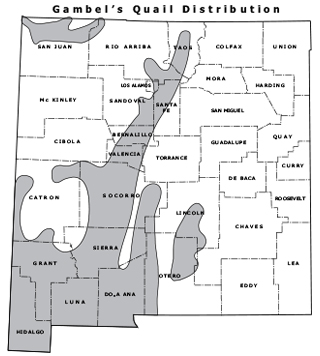
Northern bobwhite quail
Northern bobwhite require brushy cover for nesting and hiding. They need large expanses of clumped native warm season grasses mixed with annual weeds, legumes, and woody thickets that are thick above but open underneath. In southeastern New Mexico, shinnery oak is a common component of habitat. Other common vegetation includes sandsage, sand dropseed, side oats grama, bluestems, and skunkbush.
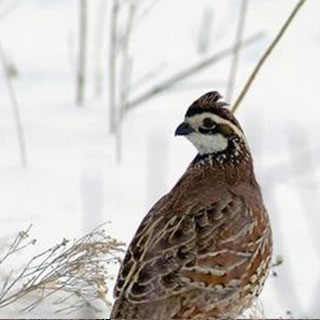
Northern bobwhite (Photo by ksoutdoors.com)
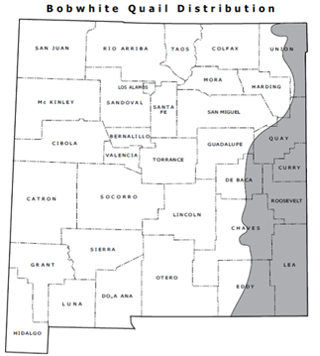
Montezuma quail
Montezuma quail are found in pine-oak and oak scrub habitats, especially in open woodlands with a grass understory. They are often found on steep slopes, and do not occur in areas without an adequate grassland component.
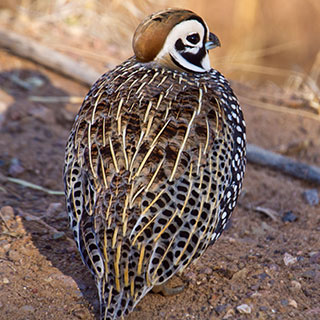
Montezuma quail (Photo by M. L. Watson)
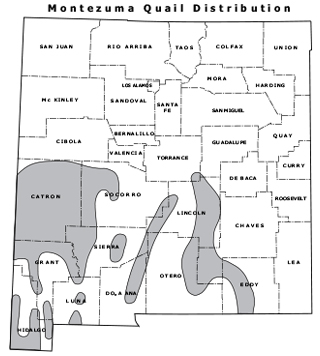
Quail require four basic habitat components: food, cover, water, and space.
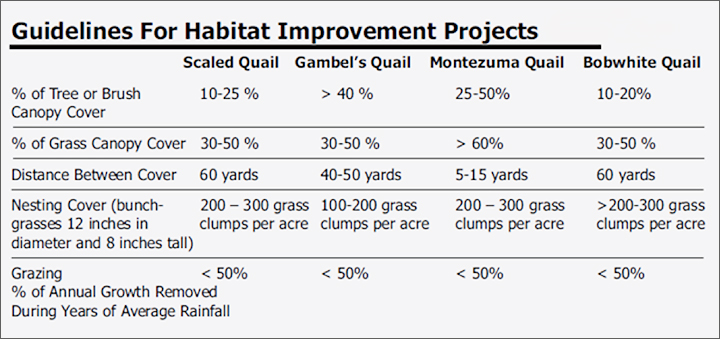
[/fusion_toggle]
Dusky grouse
The Dusky grouse is a high elevation species in New Mexico, are generally found at elevations above 7000 feet. Dusky grouse use montane forest communities typically dominated by Ponderosa Pine, Douglas-fir, and occasionally aspen. They winter in almost strictly conifer forests.
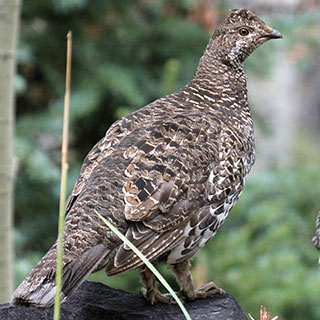
Dusky grouse (Photo by M.L. Watson)
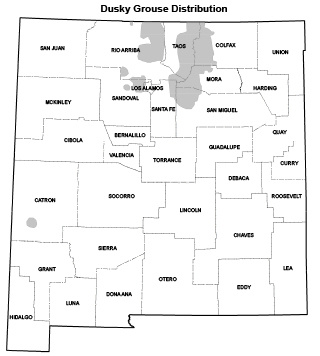
Ring-necked pheasant
The Pheasant is an edge loving species, and they are found mainly in agricultural areas intermixed with areas of taller vegetation often found in grass ditches, hedges, marshes, woodland borders, and brushy groves.
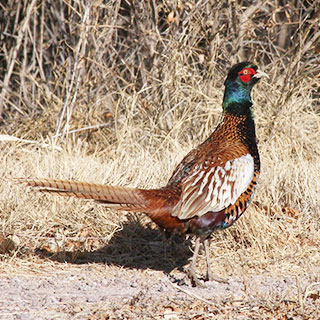
Pheasant (Photo by J.N. Stuart)
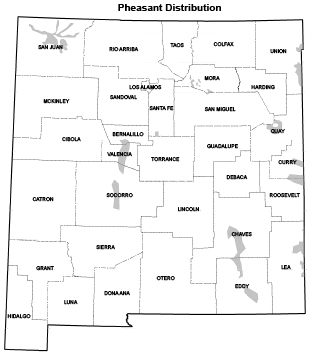
[/fusion_toggle]
Eurasian collared-dove
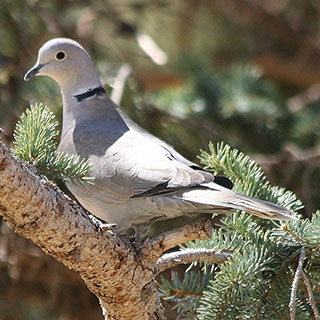
Eurasian collared dove (Photo by J.N. Stuart)
The Eurasian collared-dove is native to Asia and Europe. Released in Caribbean in the mid-1970s, this species reached Florida in the 1980s. Within 10 years, populations were established across North America. This invasive species has spread faster than most others, including the house sparrow and European starling.
The Eurasian collared-dove is considered upland game due to its non-migratory nature and invasive status. It can be found through New Mexico all year long. Eurasian collared-doves mainly live in urban, suburban, and agricultural areas. They tend to perch on telephone poles and wires, and in large trees.
Migratory doves and Pigeons are also present in New Mexico. (See the Migratory Game Bird page for more information on season dates and harvest regulations).
Hunters are responsible for identifying their target before shooting. New Mexico contains other doves and pigeons that do not have a yearlong season. Ensure that you are harvesting a Eurasian collared-dove before shooting. Here are some distinguishing characteristics. See also this dove and band-tailed pigeon USFW identification guide (PDF).
Eurasian collared-dove
- Approximately 14″ from tip of beak to end of tail
- Grayish-brown to gray-buff colored
- Larger than native doves, smaller than pigeons
- Long, squared off tail
- Thin black band on neck
- No wing whistle on flight take off
- Flight pattern consists of bursts of clipped wingbeats and looping glides
- Song is a rhythmic hooting coo COOO cup, coo COOO cup
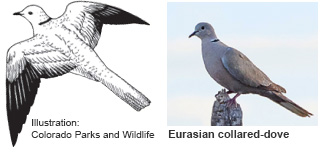
Mourning dove
- Approximately 12″ from tip of beak to tip of tail
- Grayish-brown color
- Fairly small size compared to other dove and pigeon
- Long, pointed tail
- Buffy patch on cheek
- Song is a rhythmic hooting cooAhoo coo coo
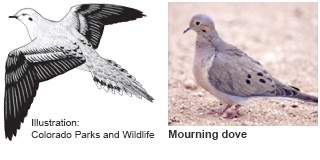
White-winged dove
- Approximately 13″ from tip of beak to tip of tail
- Slightly larger than mourning dove
- Long, rounded tail
- Brownish-gray color
- White band on upper wing surface
- Song is a rhythmic hooting whoo-OOO-oo, ooo-oo
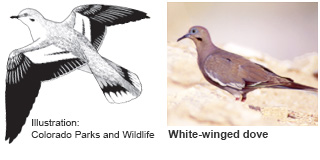
Band-tailed pigeon
- Approximately 15″ from tip of beak to end of tail
- Larger size compared to doves
- Blue-gray above and purplish-gray below
- White crescent on the back of the neck
- Pale gray band at the tip of the tail
- Bill and feet are yellow
- Call is slow 1 or 2 syllable coo, somewhat owl-like
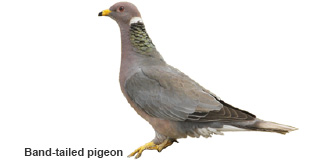
[/fusion_toggle]
Squirrel
New Mexico boasts many squirrel breeds, four of which are open for harvest. These include Gray, Red, Fox, and Abert’s.
Gray squirrel
Gray squirrels are found in the mountains and plateaus of New Mexico. Gray squirrel habitat is fairly dense, mixed broadleaf communities of deciduous forests near montane or evergreen woodlands. They prefer mature forests of tall and decadent trees. The gray squirrel is gray in coloration, with a white belly. They do not have black line separating these colors. It has short, rounded ears, and a noticeable full, bushy tail which is fringed in white during winter. The feet are flecked with gray.
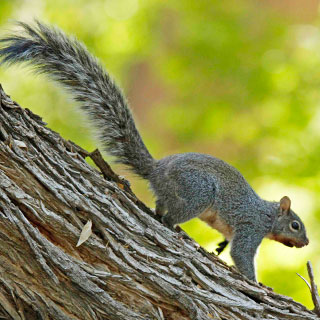
Gray squirrel (Photo by M.L. Watson)
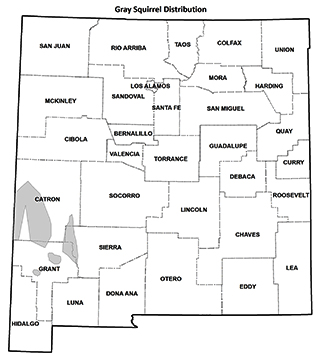
Red squirrel
Red squirrels are found in the montane areas of New Mexico. They use subalpine spruce-fir forests, mixed-conifer forest, and on occasion ponderosa pine forests. They prefer large, older trees, in habitats enhanced with snags, downed timber, and thickets of saplings. The red squirrel is a smaller sized squirrel, with a gray, rusty-tinged coat, red feet, and a white belly. The tail is bushy, lined with black, and tends to be shorter in length than the body. The red squirrel is extremely vocal and territorial.
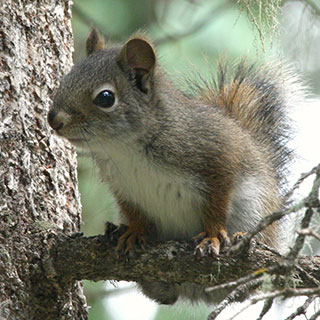
Red squirrel (Photo by J.N. Stuart)
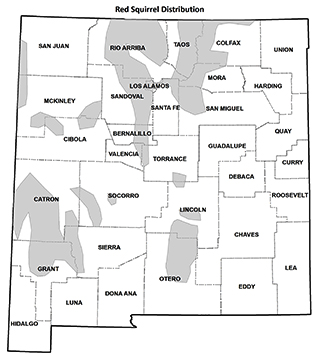
Abert’s squirrel
Abert’s squirrels are found in ponderosa pine forests in the mountains and plateaus of New Mexico. They rely on ponderosa pine trees for both food and shelter. The preferred habitat is uneven-aged pine stands, composed of small even-aged groups within the stand containing tree densities between 200 and 250 trees per acre. During most times of year, except midsummer, these squirrels possess ear tufts. Most are peppered iron gray with white underparts, with these different collars separated by a black strip along the squirrel’s side. Their feet often have white on them. The backs of the ears are chestnut brown with dark or black hair tufts.
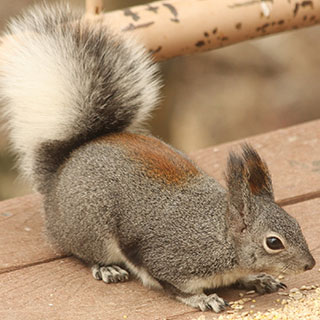
Abert’s squirrel (Photo by J.N. Stuart)
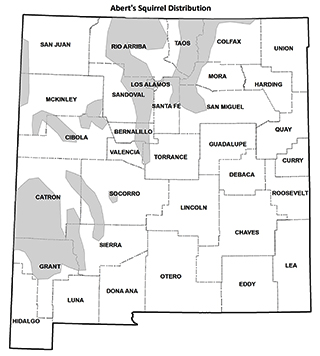
Fox squirrel
Fox squirrels were introduced throughout most of their range in New Mexico, except in the north where they likely dispersed in from Colorado. They are primarily found in urban areas in the eastern part of the state, but have expanded their range some since their introduction. They prefer upland hardwood forests containing nut producing trees. The fox squirrel is a gray with tints of orange, and has a buffy orangish-belly.
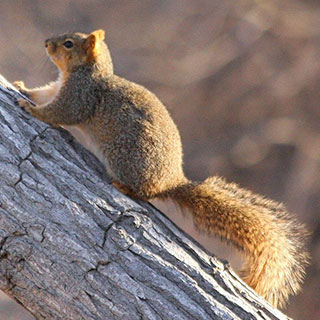
Fox squirrel (Photo by J.N. Stuart)
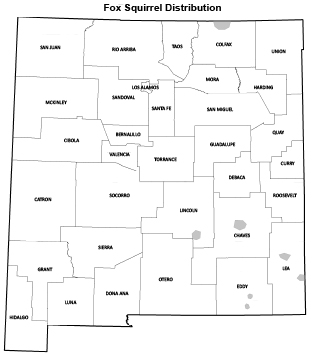
[/fusion_toggle][/fusion_accordion]
For more hunting and license information, reference the New Mexico Hunting Rules & Info.

